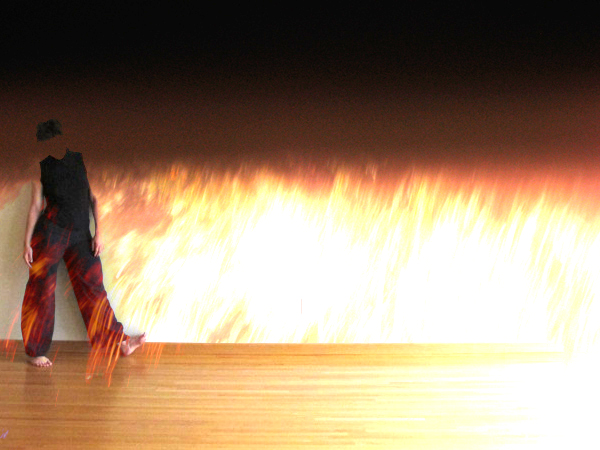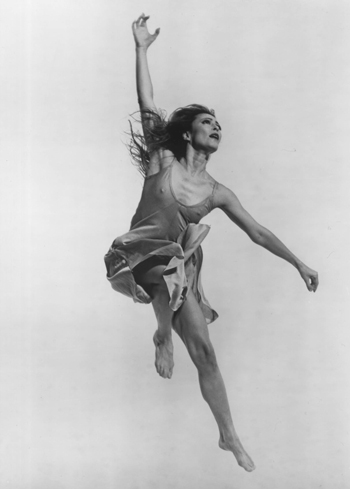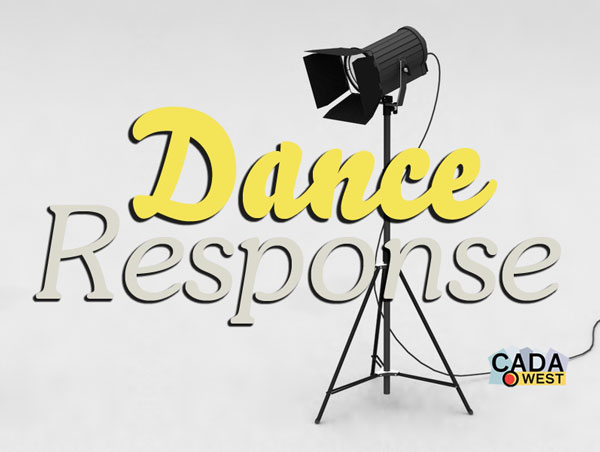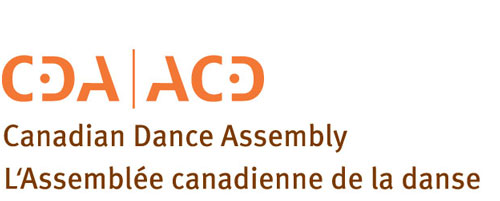
Get to know your CADA/West
October 2013 Member's Newsletter
This month's edition features a profile of Judith Garay; a call for Dance Response participants; our monthly dance citizenship challenge; and a call for volunteers from the CDA.

CADA/West Member: Judith Garay
Artistic Director, Dancers Dancing
Associate Professor, Contemporary Arts, Simon Fraser University
Choreographer, Teacher, Mentor
Where are you from?
I was born in Kamloops, BC. As a young child I also lived in the United Kingdom in Edinburgh, London and Portsmouth before returning to Canada and living in Victoria and Halifax. As an adult I have lived in Toronto, London, Paris, New York and am now living in Vancouver.
How long have you been dancing? What training/education did you receive before you embarked upon your professional dance career?
My first structured dance classes were at age 9 with Vivian Briggs in Victoria and continued in Halifax with David Latoff and Janice Merritt Fleming. I then quit dancing briefly at age 16 before discovering modern dance teacher Anita Martin while I was a student at the Nova Scotia College of Art and Design (NSCAD). Shortly thereafter I began ballet classes with Clair Bader. After deciding to pursue dance as a career I studied for a few months at the school of Toronto Dance Theatre before attending the London School of Contemporary Dance (LSCD) in England.
What training are you currently involved in?
I am self-training at this point in time. This includes an assortment of somatic, therapeutic and technical dance practices and varies depending on my other commitments.
Can you give us some tips on how you balance all of your jobs/roles?
I am a fairly organized person and I love scheduling things. That said, balance is not something I find very often and it has not been a priority for most of my career. I have tended to go full speed ahead on whatever project is up front.
More recently, due to the fact that I can no longer sustain working non-stop, I have started to seek balance when it seems necessary. I try to stop working or take a break when I’m so tired or so overwhelmed that I am wasting time. I have started saying no when a new commitment will interfere with a prior commitment or impinge on my health.
Very recently I have learned how to say no to stress. This has been immensely useful on all levels of my work and life and hopefully I can sustain this.
Can you tell us a bit about your performing career?
My first professional dance gig was in Paris with Ensemble Choreographique de Vitry. In London I danced with Extemporary Dance Group and toured with The Lecture Demonstration Group from LSCD, sustaining a severe stress fracture from extensive performing on all kinds of floors including brick, concrete and newly waxed tiles and wood. After moving to New York City I performed with Pearl Lang, Marcus Schulkind, Anthony Morgan’s company as well as Double Dancing, a duet company with Morgan and myself, and most notably for ten years with the Martha Graham Dance Company among others.
After moving to Vancouver in 1992 I had the pleasure of dancing works by Morgan, Cheryl Prophet, Santa Aloi, Grant Strate, Holly Bright, Jennifer Mascall as well as in my own work.
When and how did you transition into choreography? Were you still performing?
I choreographed my first dance at 12 on my 3-year old sister and her friends. I played the piano while the children danced. The audience was comprised of the mothers. I choreographed a couple of dances in Halifax while I was a student at NSCAD creating on myself and sometimes on acting students from Dalhousie.
At LSCD I was commissioned to create a technical demonstration on the first year class. This was my first experience working with a composer.
In New York I started choreographing what I consider to be the beginnings of my adult choreography after joining in the Graham Company. The first piece was a solo called Line Through the Centre. Because I did not yet have my Green Card The Graham Company had left me in the USA during a State Department tour to the South Asia and the Middle East. I used this time to start creating. I continued to perform until 1999 when I formed Dancers Dancing. I plan to continue choreographing far into the future.
As a professor in SFU's Dance Program, what advice do you offer today's young dance artists?
I give advice to young dancers regularly. It varies from person to person and I believe the advice I offer is individual to each person. If offering generic advice it would be to follow your heart and use your head.
What's coming up for you and your company?
Dancers Dancing is preparing to remount The Fine Line ~ twisted angels for the 2014 Vancouver International Dance Festival in March at the Roundhouse (one of our Dance Response shows!) on premiering dancers Vanessa Goodman and Bevin Poole with Antonio Somera in the third role. We are also pursuing touring opportunities for this trio.
Dancers Dancing is currently in between phases of creation for 20.20.20 (working title), my new work for 20 dancers inspired by Vancouver. We have had two working periods so far with studio showings at the end of each phase and are currently planning and fundraising to make the full production a reality. The projected premiere is for 2014.
In addition I am, as usual, incubating several other projects in the musing, gathering, dreaming stages.

Dance Response 2013–14
Wanna flex your dance dialogue muscle?
Want discount tix to shows?
Join our 2nd season of Dance Response.
Dance Response is CADA/West's participatory course in dance dialogue. It runs November to April and gets you into shows with DanceHouse, VIDF and The Dance Centre at a discounted rate.
See 6 six shows, stay for 6 post-show chats (30 mins) and post 6 written responses.

Speak With Your Feet
This month's dance citizenship challenge...
Put out by Le Regroupement quebecois de la danse (RQD), Quebec's dance service organization, this Choreographers Competency Profile presents the results of an occupational analysis focused on the profession of the choreographer and breaks down the subskills and important actions associated with each of the skills listed. This document also contains the Chart of Competencies for Choreographers:
"Artists who practice this profession can refer to both documents in order to have their expertise recognized, as well as to evaluate their skills and determine areas where they could pursue additional training."
"For dance service organizations, these documents are a useful tool to identify ongoing training needs, and can also be used to develop a specialized choreography training program."
"For dance companies and producers, these documents can be a useful guide to hire choreographers and write up contracts."
"Finally, during negotiations aimed at improving work conditions, the Competency Profile and Chart of Competencies for Choreographers can serve as a reference tool and can help to determine the content of agreements among the parties concerned."

The CDA comes out west, hosting its National Conference & AGM in Vancouver this November 19–20. They are currently looking for volunteers throughout the conference. Please see the call HERE. The benefits of volunteering include free admittance on the day you volunteer, with meals provided.
CADA/West and its Members,
ensuring dance remains vital to our culture.
designed, written and built by Deanna Peters, CADA/West Communications Officer
